Catching up
It has been a long time since our last blog right after we returned from working with very smart people at CERN. There is a lot of catching up to do. After a much deserved winter break, we got back and the main task was to narrow down our problem space. We had many avenues we could dive into, but there was one that particularly caught our attention: SPACE JUNK!
Why Space junk?
It probably does not seem like much of a problem right now. However, trends predict an exponential growth in the amount of space waste in the next decade. Let’s first understand how many objects are in space. There are currently around 11500 satellites in orbit. While this might seem like a small number now, by 2030 it is expected to increase to a whopping 60,000+. Companies like “Starlink” that provide fast communication are becoming widespread, with lots of competitors following suit and invading the lower earth orbit with their own satellites. The problem is that 25% of all satellites are currently functioning. This means that 2,500 satellites are left as space junk, floating around in space.
To make matters worse, these numbers only account for satellites. “Space junk” consists of a lot more things, like waste from rocket launches which is carelessly left in orbit. As humanity’s presence in space has expanded, so has the number of objects orbiting Earth. There are currently millions of tiny objects between 1 millimeter and 10 centimeters (or just under 4 inches) in LEO. This debris poses great risks to current and future spacecraft. Millions of small objects, travelling at extremely high speeds, cause devastating punctures on impact. Every new collision creates thousands of new fragments, that then in turn cause new collisions – think of a chain reaction. This is called the Kessler Syndrome. Eventually, the resulting debris could render crucial orbits unusable, jeopardising future space exploration and vital Earth-monitoring technologies.
What do we do about it?
Before the private companies and governments start “colonising” the earth’s orbits, there has to be a means to tackle this growing concern. There are existing startups which are committed to tackling the large debris (>10 cm in diameter), as it is easier to detect and remediate. Other companies have solved the problem of very small debris (> 1cm) with bullet-proof shields and repellent space suits. However, the small debris (10cm – 1cm) is extremely difficult to track, due it it’s size and it’s extreme speed of 15 km/s, which is 3 times the speed of a bullet. This debris, although small in size, has the potential to cause major damage to existing working satellites. It is most concentrated in the lower earth orbit, and composed of 4 metals: lead, copper, lithium and aluminum.
Our inspiration..
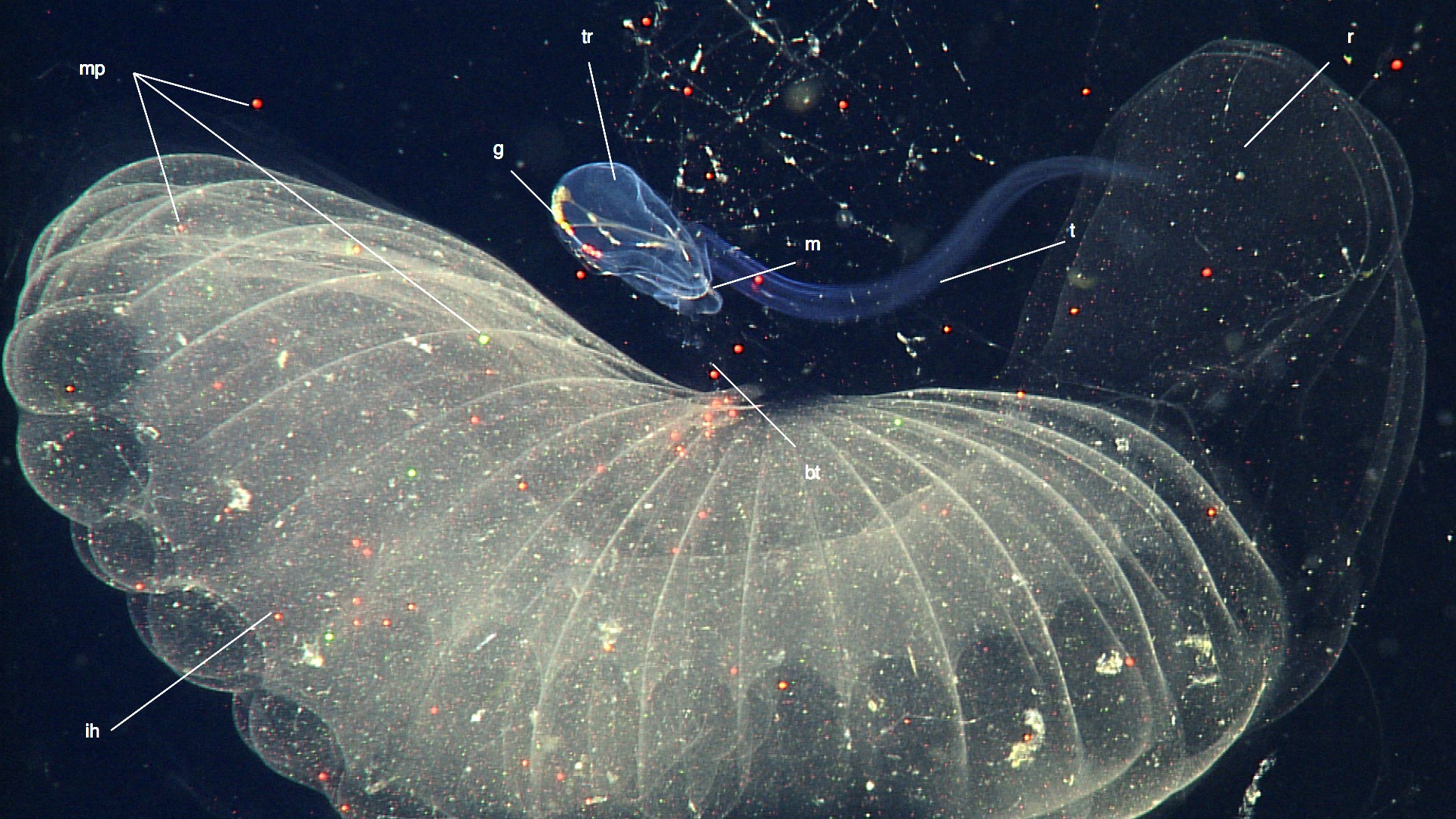
See this jellyfish-like creature? This is a marine organism called a “Larvacean”, about 7 cm in diameter on average. It lies in the photic zone of the ocean, which is about 100 to 1400 meters below the surface. These creatures filter carbon dioxide from oceans and collect microplastics in their exterior mucus dwellings. When the dwellings fill up with microplastics, they abandon them, and the dwellings fall to the ocean floor. Their unique biology allows them to clean the ocean from microplastics.
We thought, “What if.. We had larvaceans for the lower earth orbit, which could collect the debris, just like the larvaceans clean the ocean?”
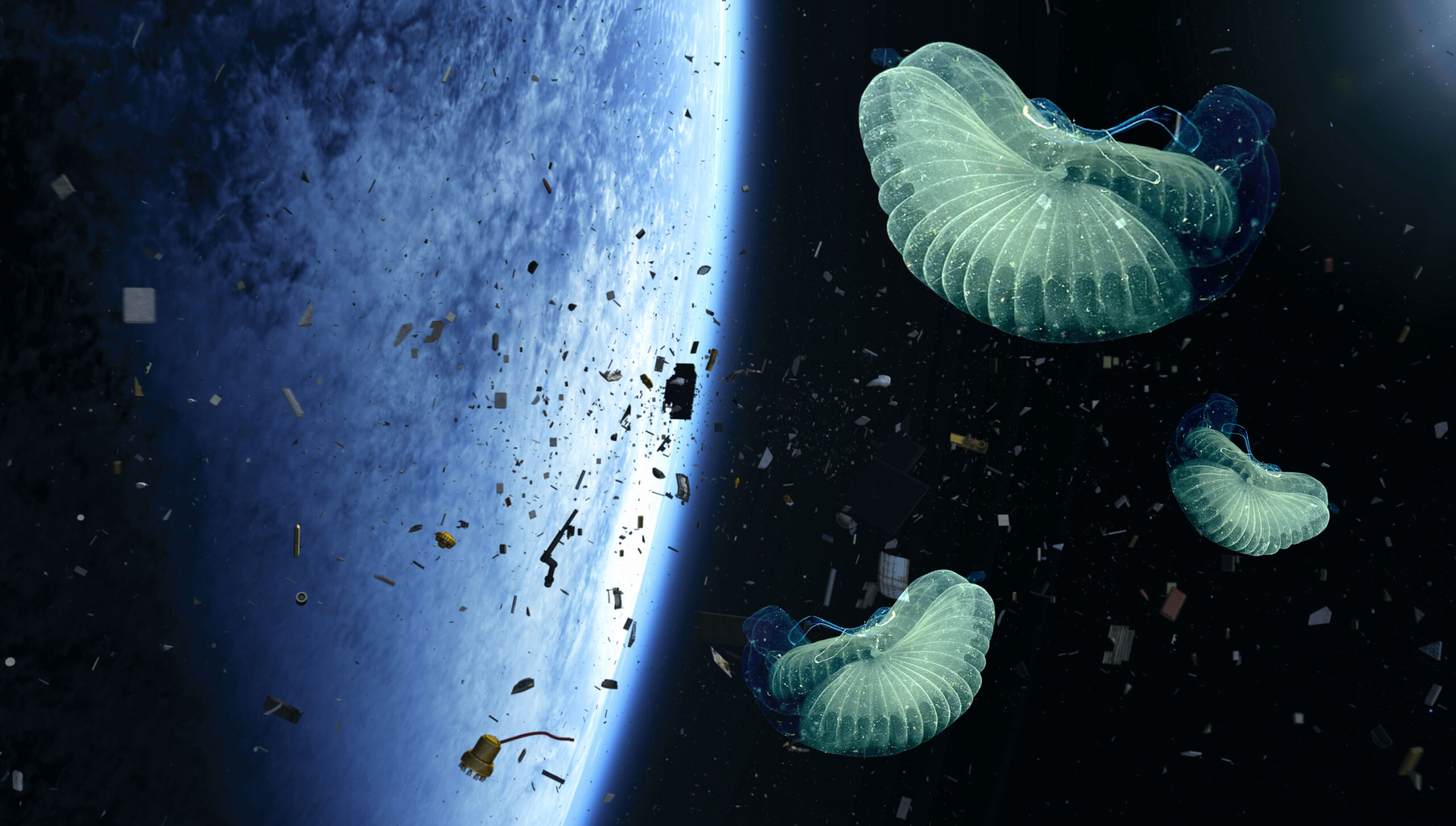
Further ideation on how to make and deploy this solution led us to the discovery of a 3D printing technique, which uses “Computed Axial Lithography”. This technique works extremely well in zero gravity, and utilizes resin. Resin is a versatile material that has the ability to withstand extreme temperatures and bond with metals. The 3D printed larvaceans would collect the debris and then process it to produce raw materials. The zero-gravity environment would be taken advantage of to create high-quality metal alloys.
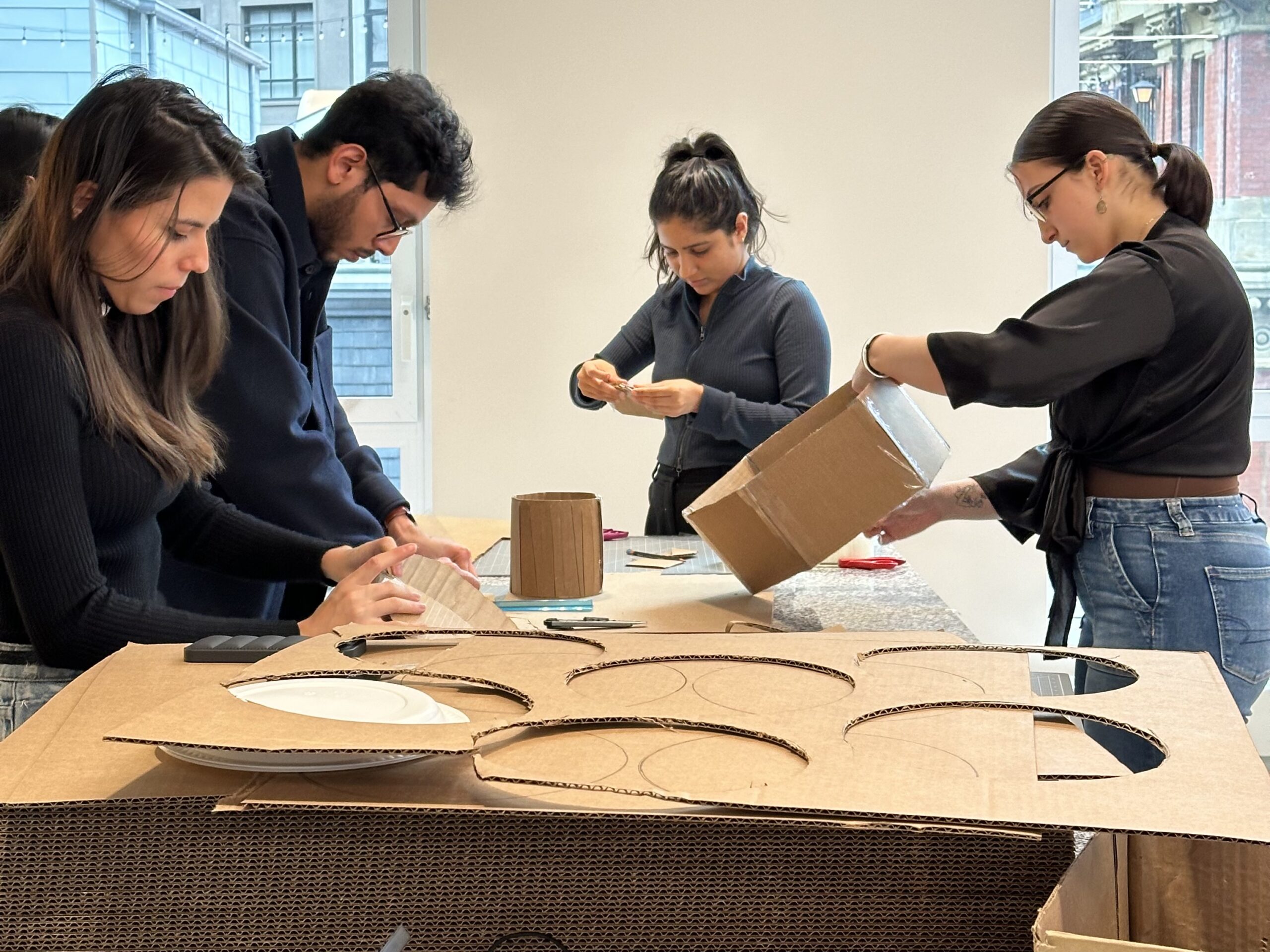
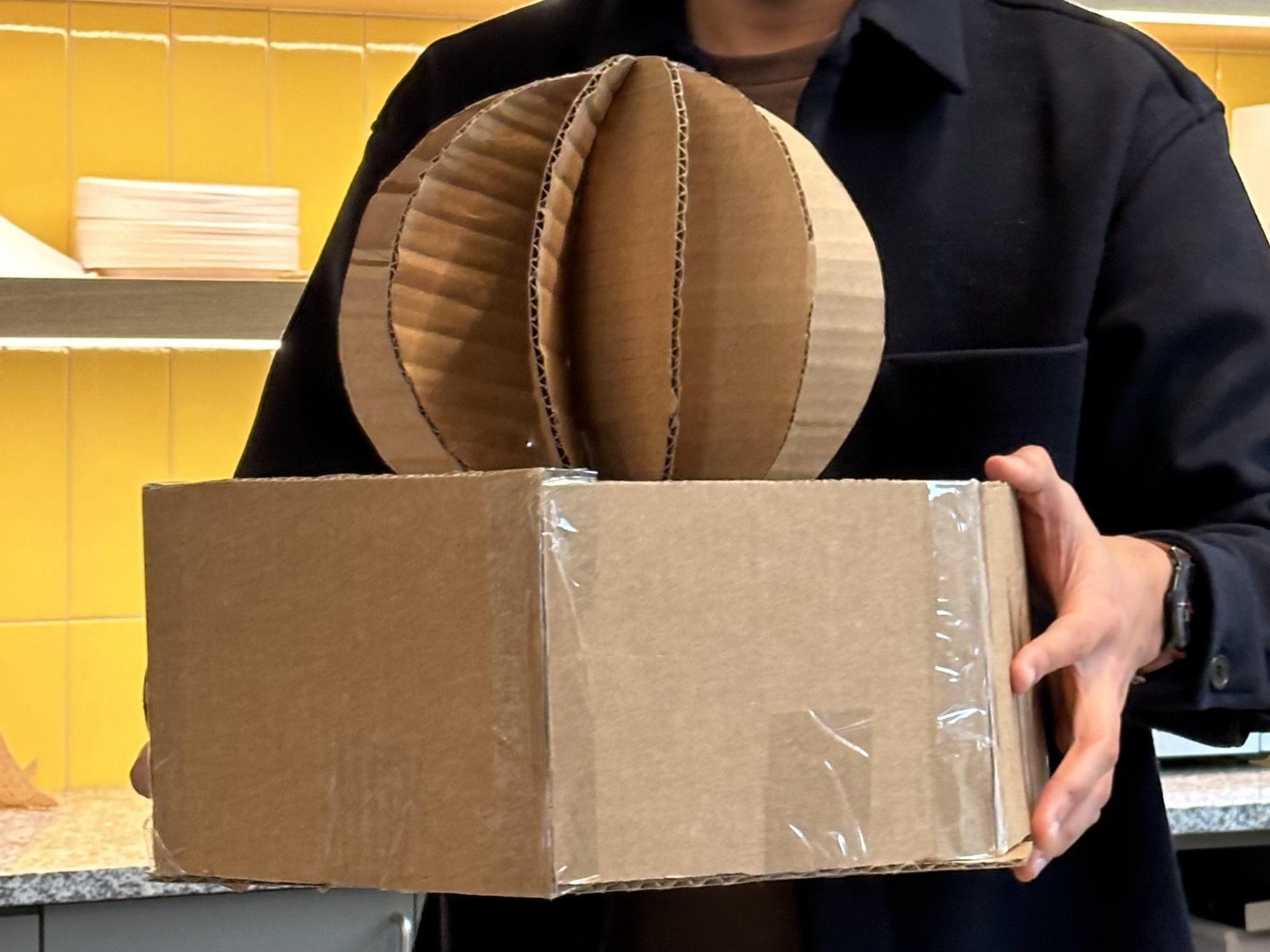
Future Scenario
What do we imagine the future to be like in 2030? We took inspiration from ARUP’s “Human Inc” future scenario, where:
“…the condition of humanity has continued to improve at the expense of the environment. Climate considerations have come third, subordinate to economic development and societal wellbeing. When coordinated action continued to falter on a global level, the super-economies settled for ambitious adaptation programmes. Future-proofing their populations is a priority.” – ARUP (Four Plausible Futures, 2050 Scenarios)
We elected to envision a “Possible” future, that perhaps is not the most likely to happen, but is in the cards. We took note of NASA’s prediction that space debris would increase ten fold every 10 years.
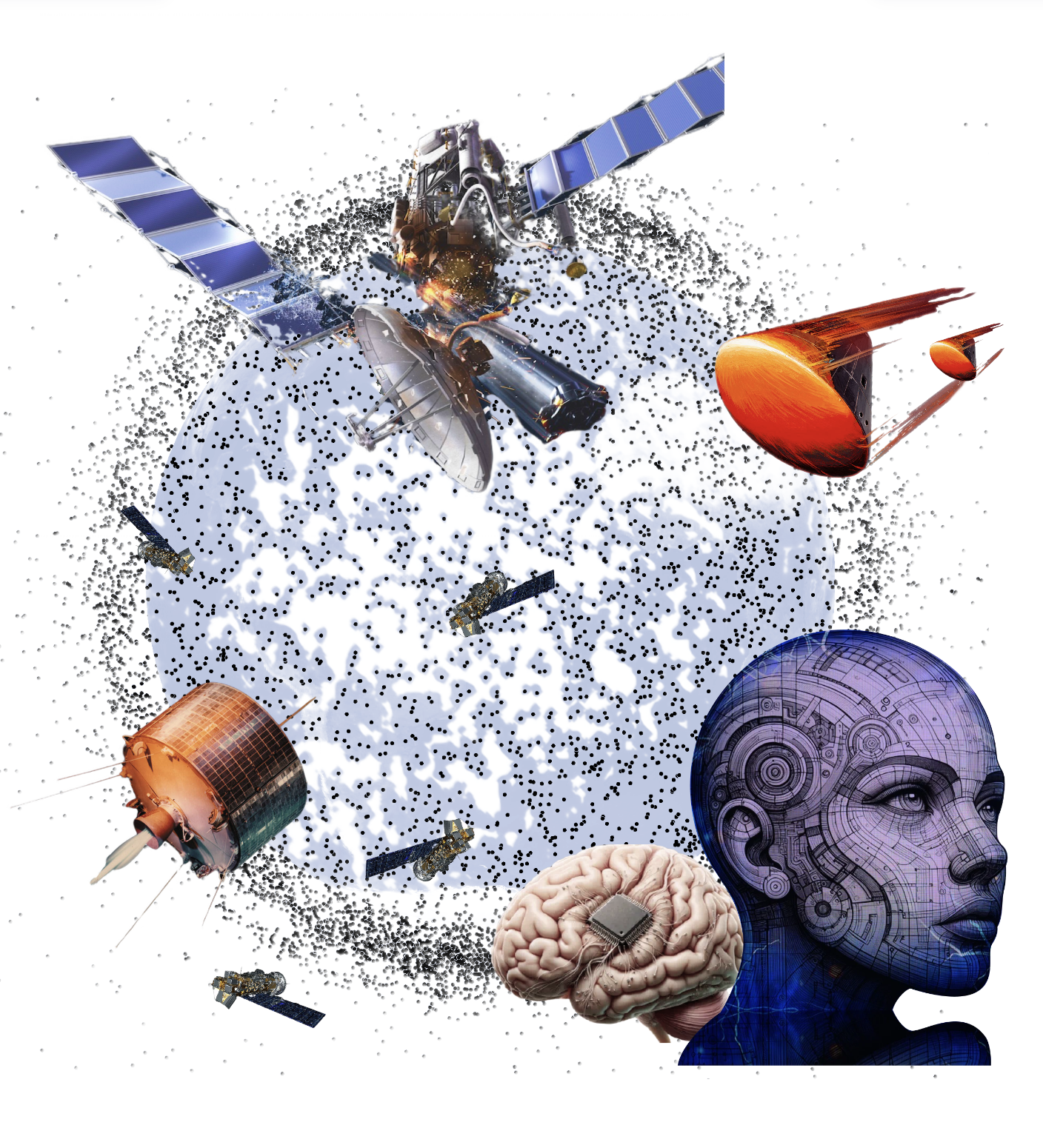
“In 2030, imagine a future where space debris is worse than ever, and countries come together for a number of years to clean up space, because our production of satellites to satisfy our consumption of information poses a great threat to the possibility of space exploration itself.”
We imagine that with the success of Neuralink in the medical sector, Society will transition to brain-computer interfaces, and that by 2030 they will be common and help people in their daily lives. Big developments in AI and brain-computer interfaces will create new opportunities for humans. We imagine that humans will be able to have jobs in space due to brain-computer interfaces and AI.

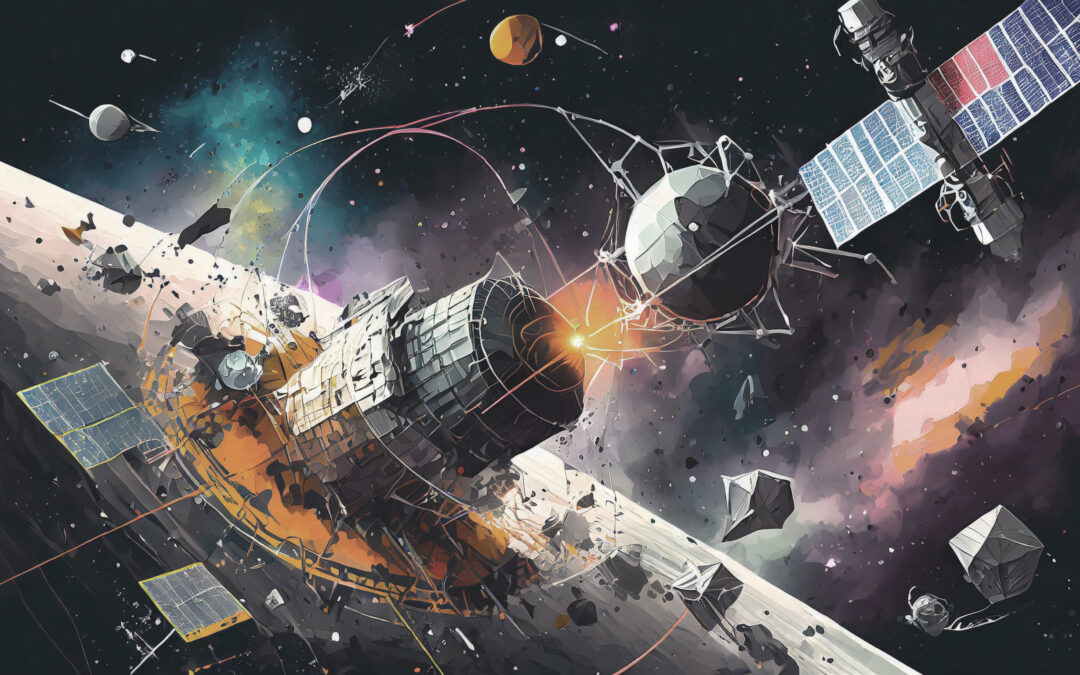
Recent Comments